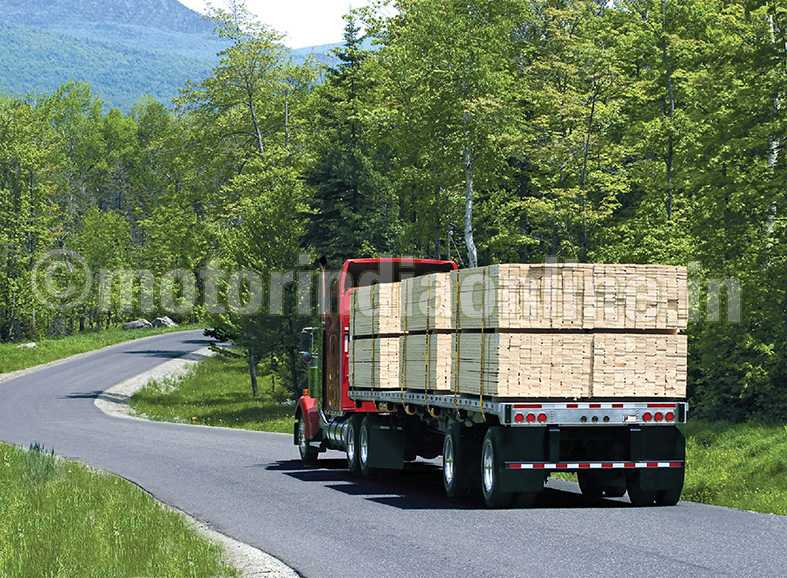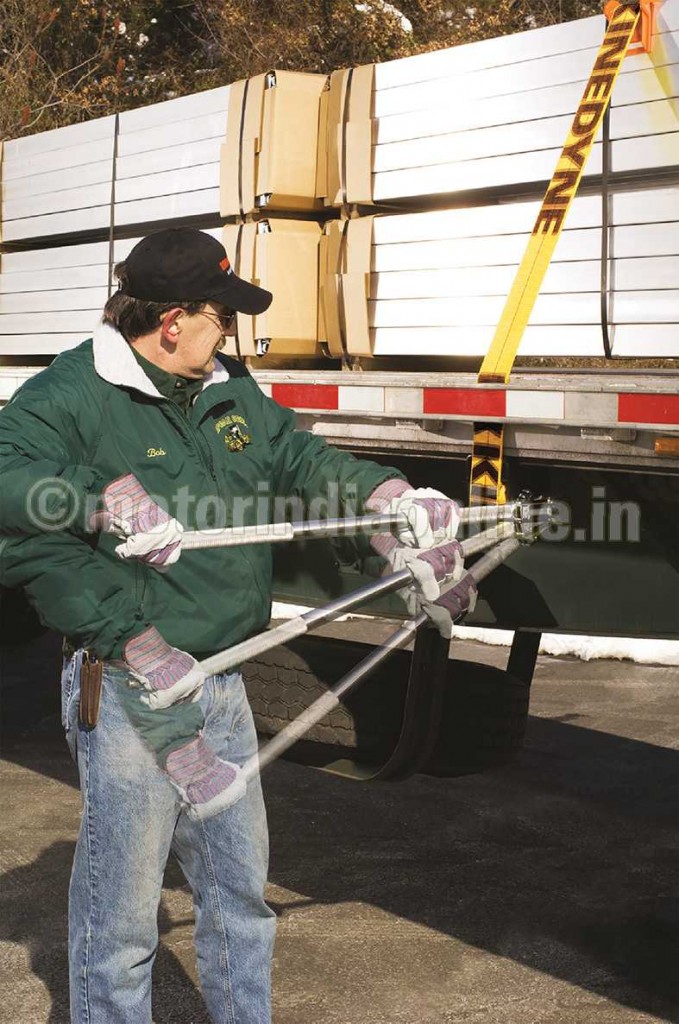No matter whether you are a driver, owner-operator or fleet manager, there are certain fundamental norms to be followed while safely hauling a load. In North America there are set regulations to help guide and protect drivers, their cargo and the pedestrians around. The New Jersey-based Kinedyne is a leading worldwide manufacturer of load protection products. With knowledge and detailed quality control, the company produces a series of tools that provide optimal cargo protection on the road.
Founded in 1968, Kinedyne Corporation is a leader in manufacturing and distributing cargo safety products for the transportation industry. The company maintains the top market share in several industry sectors through development and engineering of a high-quality product offering that includes multiple patented products. Its products service users that include OEMs, fleet operators and independent owners/operators. The company serves several markets, including heavy duty trucking, government and military, farm and agricultural, moving and storage and automotive and recreational vehicles.
The company has currently facilities in four countries with a worldwide operations group that includes Kinedyne Canada Ltd. (Canada), Nantong Kinedyne Ltd. (China) and Sistemas Kinedyne, S.A. (Mexico). In 2013, Kinedyne was acquired by the Heico Companies having aggregate sales of more than $2 billion and an exceptional resource of professional services.
As a company which empowers its customers by providing education and training, Kinedyne follows the four steps deemed essential for safe load movement:
Knowledge, the most important security tool: The first and most important step in proper load protection is to be educated on the products you are using. In the US and Canada there are regulations that govern products to ensure you are meeting safety requirements. Kinedyne has based its product design on these standards, so that as an operator you can trust that the equipment is of the highest standard. Remember, even if you have all the products needed to transport a load safely, if you are not using them in the proper manner your cargo movement security is off. Improper use could compromise your cargo and cause injury to yourself and/or those around you.
Kinedyne offers training on its products and ensures the products exceed the standards as new regulations are instated as well as that their customers are armed with the proper use instruction they need. For immediate information, review Kinedyne’s video guides online at www.kinedyne.com. Here you can find equipment information as well as user instructions on popular products. Investing in your security tools by purchasing from a trusted manufacturer will save you thousands of dollars over the years in product repairs and damage costs.
Choosing the right materials and planning ahead: Load safety solutions come in a variety of options, including straps, chains, decking systems, and more. Although some choices come to be preferred, consider before purchase all options to ensure you have a clear idea of what kind of cargo you will be transporting. Other considerations that may influence your purchase decision include what kind of storage space available, the weather conditions you’ll be travelling in, etc. With a clear understanding of your needs your cargo security provider will be able to best advise you on what to purchase. Here are a few product suggestions Kinedyne recommends for common transport needs:
• Multiple product drops: Consider investing in a modular decking system like Kinedyne’s Kaptive Beam. Using a series of beams and tracks, these types of decking systems allow you to maximize your cargo space and separate your deliveries for easy drop-off.
• Warm or cold climates: Ensure you are aware of the product materials that work best in different climates. For example, Kinedyne’s POLAR Tarp Ties are made with natural rubber, designed to withstand frigid temperatures and weather conditions. These ties are produced with synthetic rubber, which are stronger against day-to-day environmental exposure to heat found in warmer environments.
• Recreational vehicle transport: If you are transporting recreational vehicles such as motorcycles, ATVs or boats, specific supportive tools exist. Review Kinedyne’s Steadymate catalogue online which details all of the products as well as explains Kinedyne’s 4 x 45° tie-down placement for optimal safety.
Working load limits and knowing your weakest link: The working load limit (WLL) is the maximum weight rating that can be used to safely assess load protection. Web Tie-down WLL rating is a maximum of 1/3 of the minimum breaking strength of the assembly. For chain the WLL is ¼ of the maximum breaking strength.
For safe transport, the aggregate sum of the working load limits of all tie downs must be a minimum of 50 per cent of the weight of the load.
Remember, cargo is only as safe as your weakest protection link. For optimal safety, cargo control products must be attached to anchor points of equal or greater strength to maintain the established working load limit. Cutting corners by choosing lower-rated anchor points will lower the WLL of your primary products and put you at risk for damages and accidents on the road.
Product maintenance and load safety checks: As mentioned earlier, you may have all the products needed for security, but if they are not being properly used or maintained you are running the risk of damages and your safety on the road as well as that of others is at stake. Kinedyne recommends that load safety materials should be checked before and after every haul as well as periodically during the trip to ensure that the assembly has not loosened and that straps have not frayed or become damaged.

